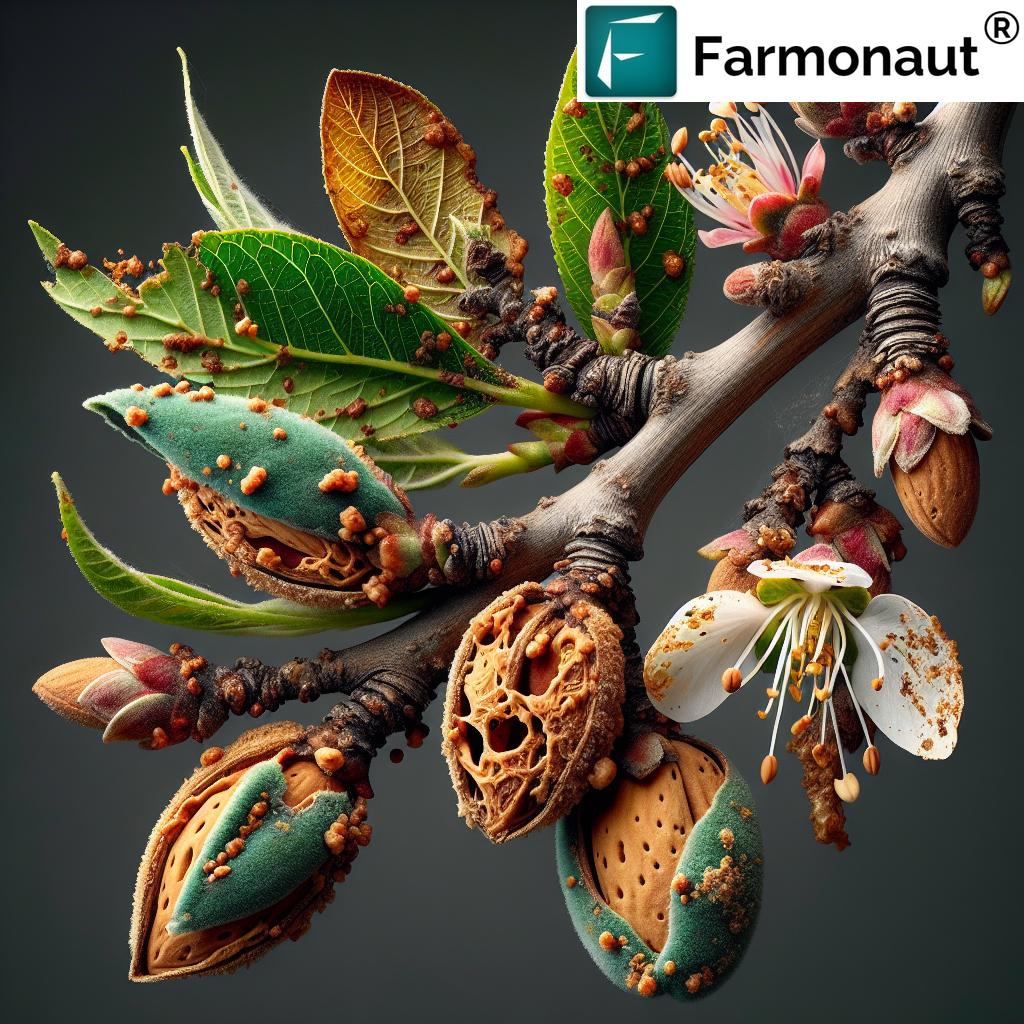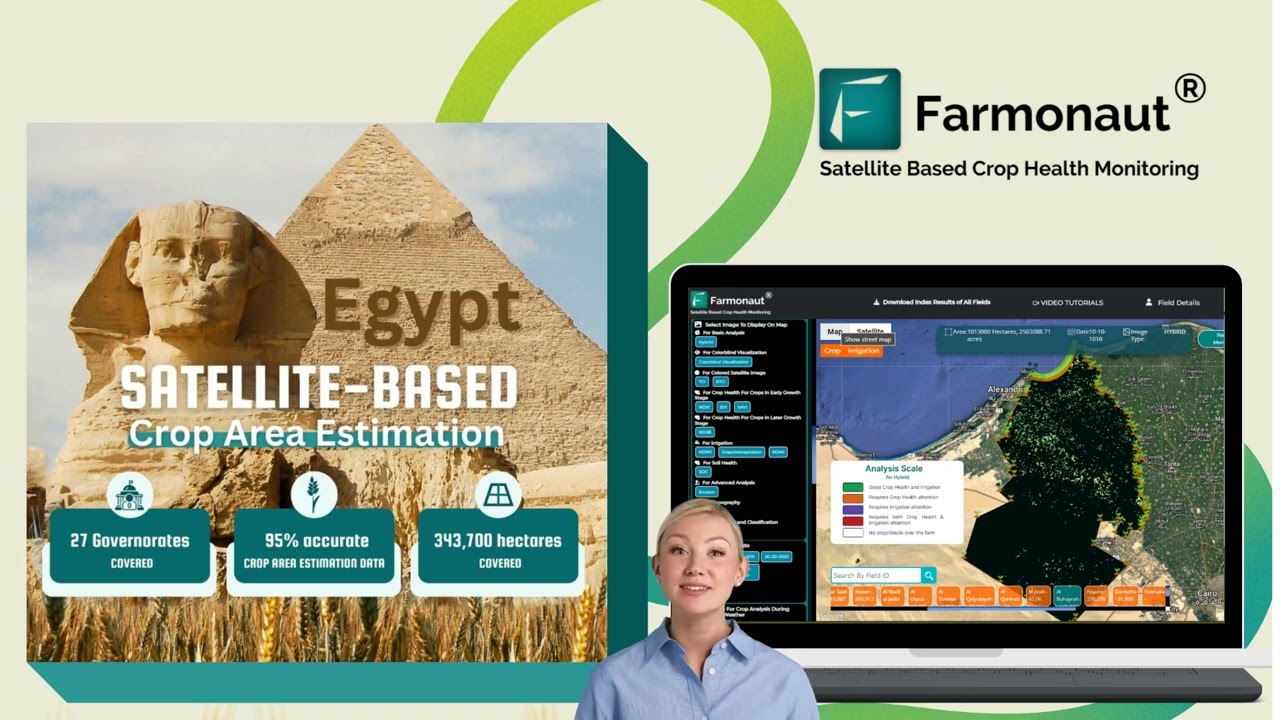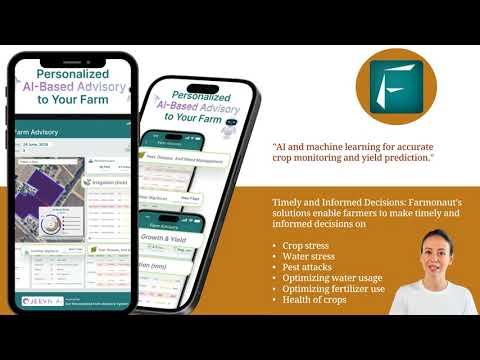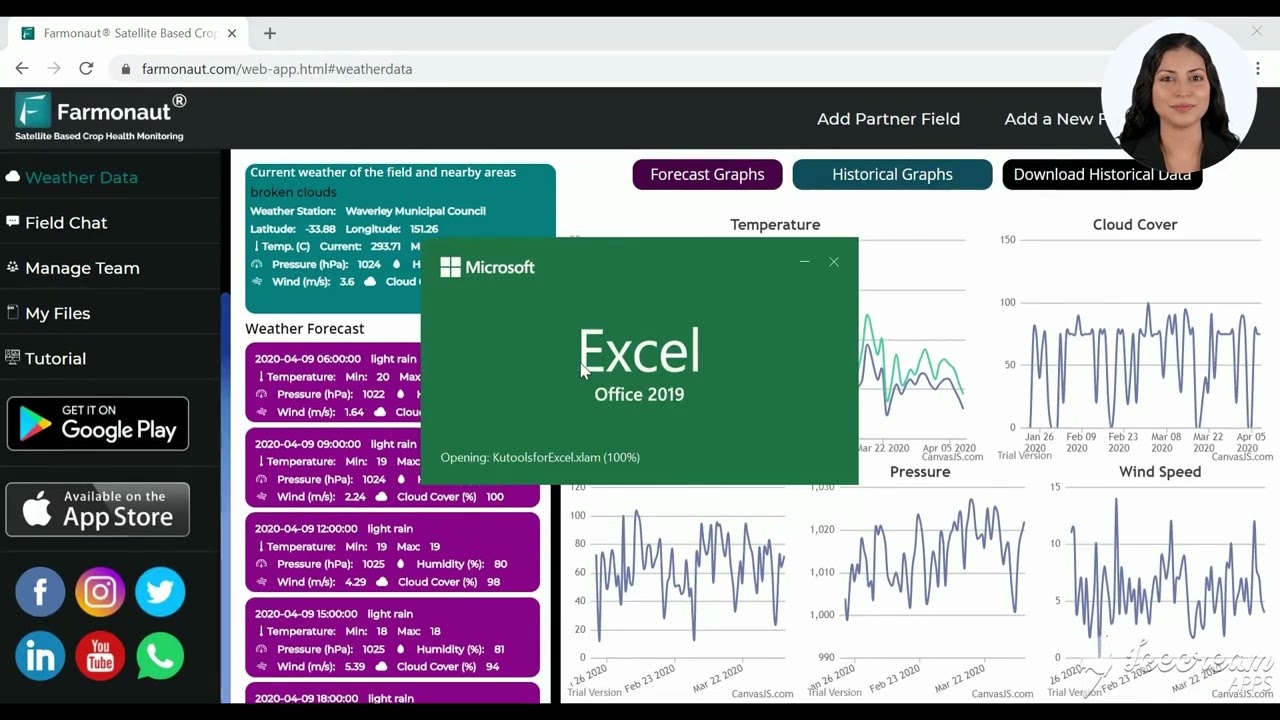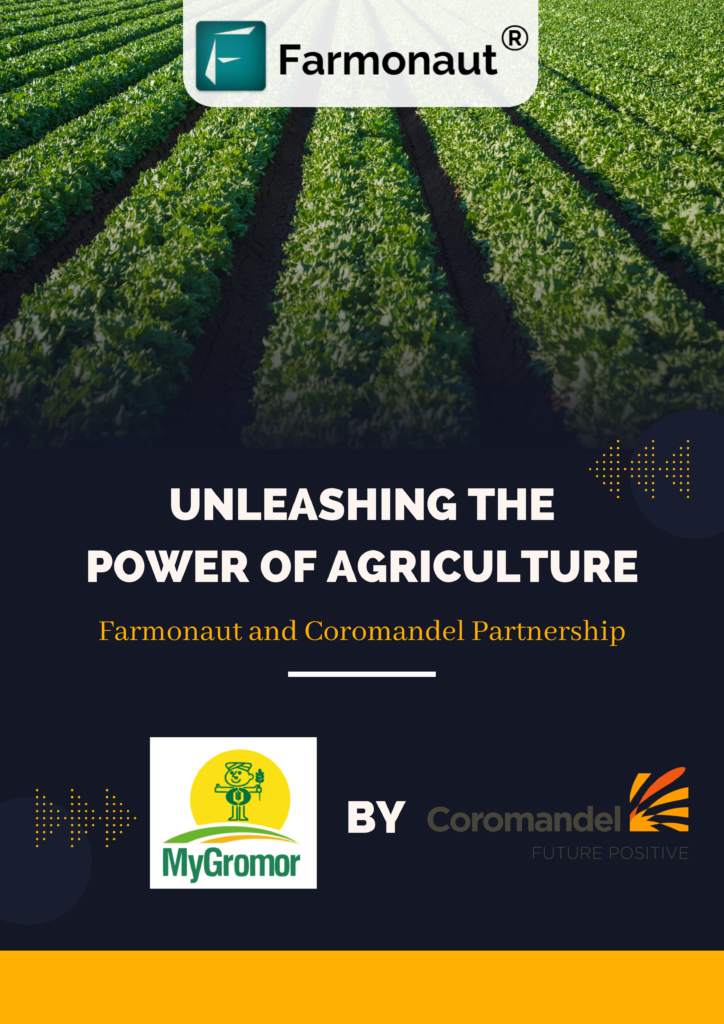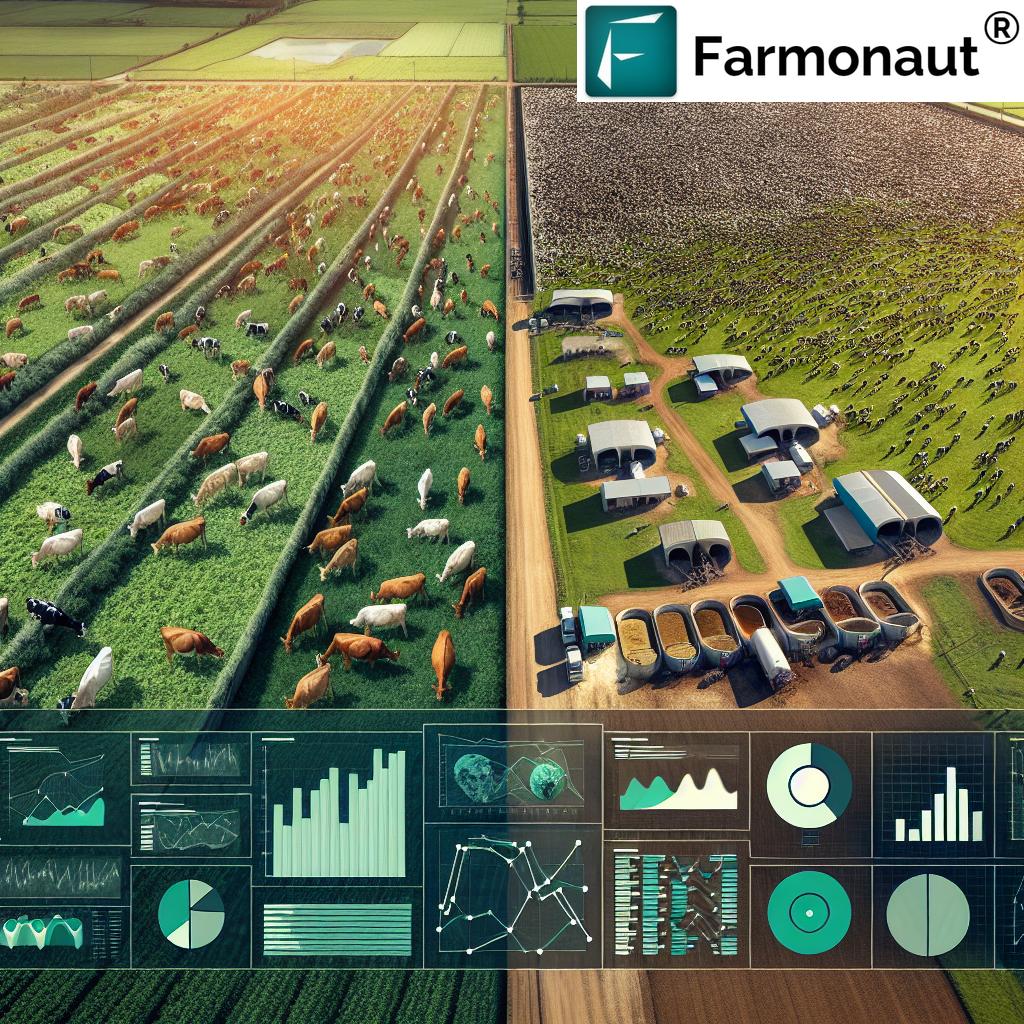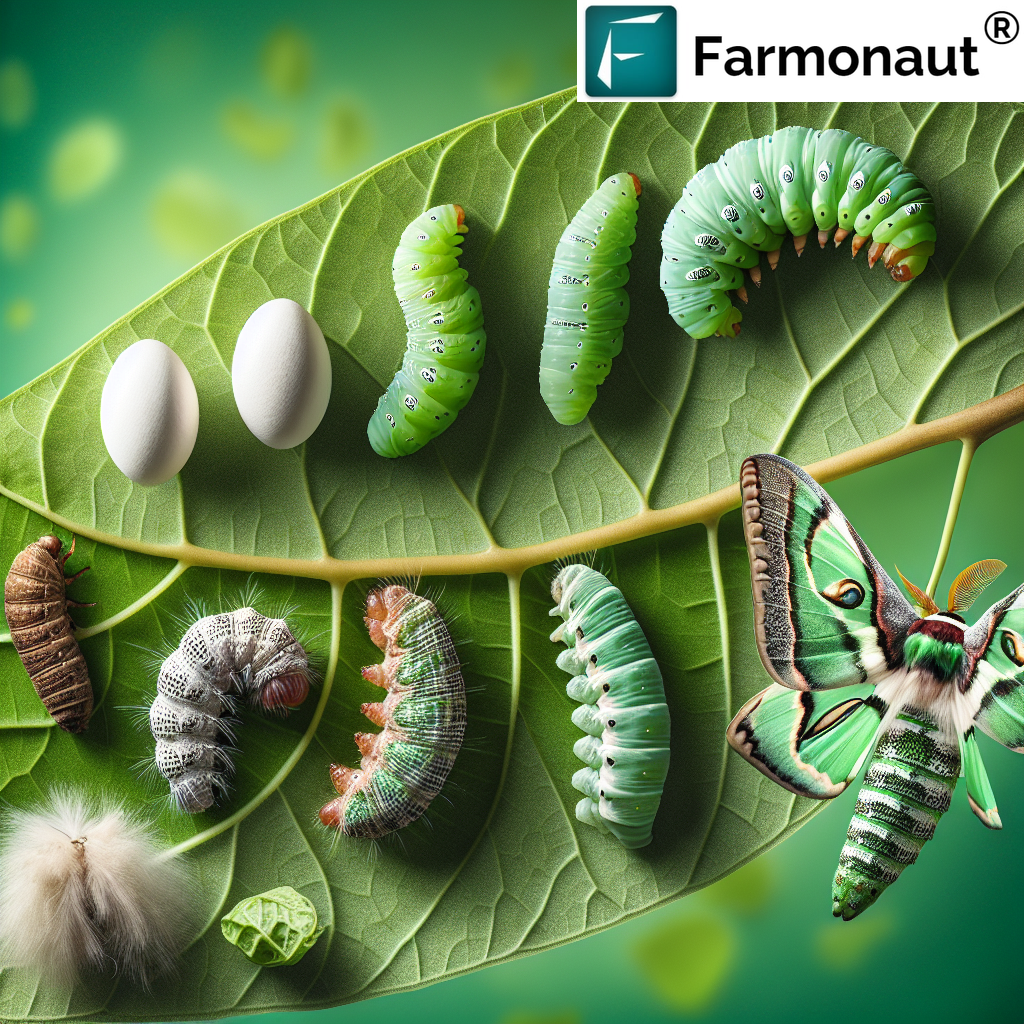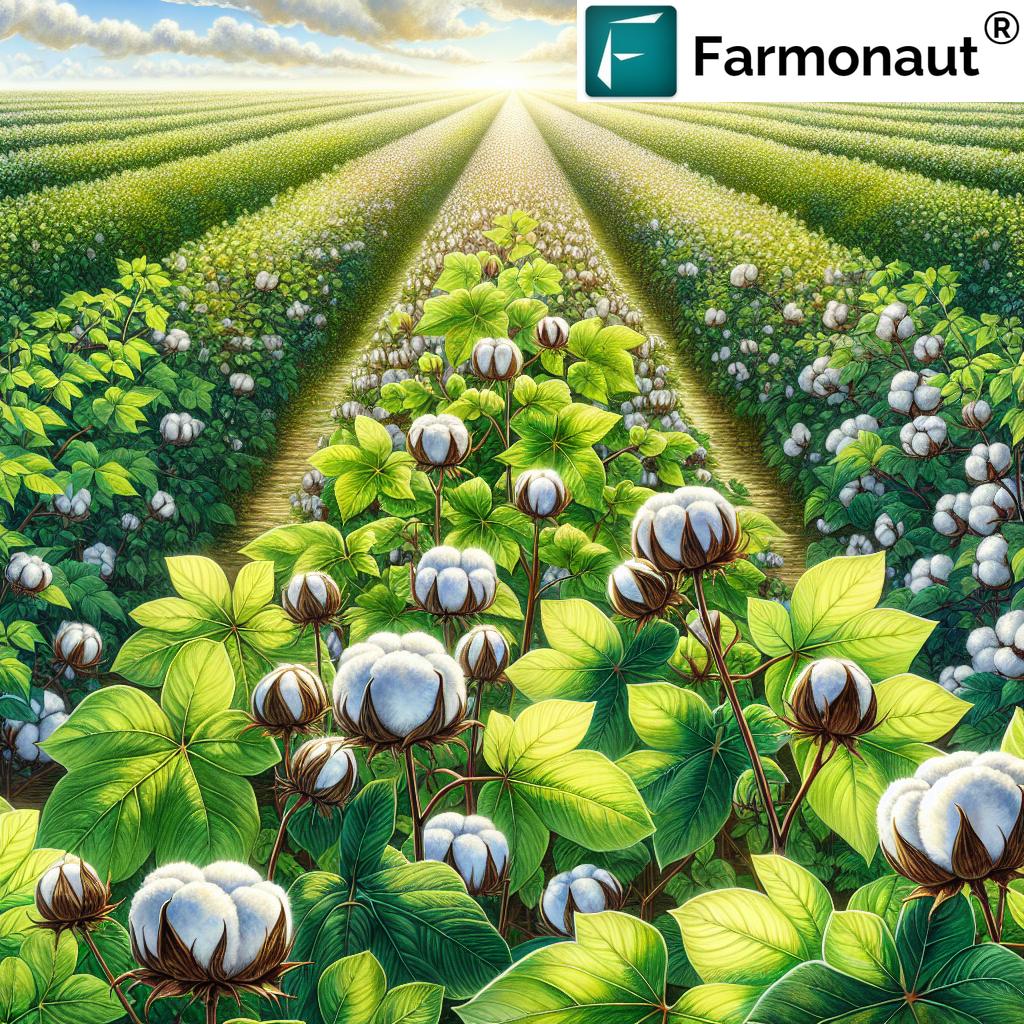Anthracnose on Almonds: 7 Shocking Management Hacks!
“Up to 30% of almond yield loss can occur if anthracnose isn’t managed with effective fungicide strategies.”
Table of Contents
- Introduction: The Silent Threat – What is Anthracnose in Almonds?
- Almond Tree Disease Symptoms: Spot Anthracnose Early
- Environmental Conditions Favoring Anthracnose Disease in Almonds
- 7 Shocking Management Hacks for Almond Anthracnose Management
- Comparative Management Strategies Table: Fungicide Options & Sustainable Practices
- Effective Fungicides for Almond Trees: Selection, Timing & Resistance
- Farmonaut’s Precision Agriculture Edge for Almond Growers
- Frequently Asked Questions
- Conclusion: How to Reduce Anthracnose in Almonds
Introduction: The Silent Threat – What is Anthracnose in Almonds?
Anthracnose disease in almonds is a significant concern for growers globally, especially in high-yield, high-density regions like California’s San Joaquin Valley. Caused by the resilient fungus Colletotrichum gloeosporioides, it targets Prunus amygdalus (almond trees), resulting in devastated yield losses if we’re not vigilant.
Typically, anthracnose strikes during warm, wet spring periods, causing infections on blossoms, leaves, shoots, limbs, and precious nuts. While all cultivars are susceptible, certain varieties (including Thompson, Merced, Price, Peerless, Winters, Monterey, Fritz, Butte) are notoriously prone to severe outbreaks, with others like Nonpareil being relatively less vulnerable.
Knowing the symptoms, environmental signals, and most effective fungicide applications (plus resistance risks) empowers us to protect sustainable almond yields for years to come. Let’s dive deep into the symptoms, management hacks, sustainable practices, and the role of Farmonaut in guarding against this insidious threat.
Almond Tree Disease Symptoms: Spot Anthracnose Early
For almond anthracnose management to be successful, early and accurate identification of symptoms and signs is crucial. Here’s what to look for on Prunus amygdalus:
1. Blossom Blight
- Flowers quickly develop water-soaked lesions that soon turn brown.
- Lesions often resemble strikes caused by brown rot, confusing untrained growers.
2. Leaf Infections and Necrosis
- Leaves on infected spurs show marginal necrosis, typically beginning with water-soaked zones that fade in color.
- Affected leaves die but often remain attached to the tree, reducing photosynthetic area and draining plant vigor.
3. Fruit (Nut) Infections
- Nuts exhibit round, orange, sunken lesions on their hulls about three weeks after petal fall. This is the classic hallmark of anthracnose.
- Profuse gumming appears as the disease progresses, often invading the kernel, turning it brown or killing it altogether.
- Diseased nuts mummify and can remain attached to the spur – an ongoing inoculum risk for future years.
- Shoot and Limb Dieback: Shoots or branches with infected nuts often succumb and die back, worsening limb structure and future yields. While the fungus invades fruitwood, the death of wood is more likely due to a toxin than direct colonization by Colletotrichum gloeosporioides.
Key Takeaway
- Any sign of water-soaked, brown or orange lesions on flowers, leaves with edge necrosis, or nuts gumming up and mummifying on the spur should prompt immediate management action.
Environmental Conditions Favoring Anthracnose Disease in Almonds
Anthracnose on almonds is highly dependent on environmental conditions for its development. As almond growers, we must understand these factors to calibrate our fungicide applications and cultural practices for maximum effectiveness.
- Warm, Wet Springs: Prolonged wet weather during spring, especially April and May, creates a highly favorable environment for Colletotrichum gloeosporioides infection and spread. El Niño years or unexpected rains spike disease risk.
- High Humidity: Moist canopies and persistent dew on nuts, leaves, and flowers provide the perfect setting for spore germination and infection.
- Poor Airflow: Dense canopies and overgrown orchards trap humidity – a key reason why pruning is essential (see management hacks below).
Growers in the San Joaquin Valley and other high-production zones should remain extra alert in seasons with heavier than usual spring rains.
7 Shocking Management Hacks for Anthracnose on Almonds
To prevent devastating yield losses and manage fungicide resistance in almonds, an integrated, science-based approach is needed. Here are our top seven proven hacks…
1. Strategic Pruning & Canopy Management
- Prune away all infected leaves, twigs, spur, and branches in the dormant fall or winter.
- This reduces overwintering inoculum and radically improves air circulation, lowering overall disease pressure.
- Open canopies dry out faster after rain or dew, breaking the environmental chain required for serious epidemics.
Cultural practices for disease control in almonds start here—reduce the sources before Colletotrichum gloeosporioides has a chance to rebound in spring.
2. Rigorous Orchard Sanitation
- Rake and clear all fallen leaves, twigs, and mummified nuts in both the growing season and in fall.
- Removing these “spore factories” prevents build-up of fungal populations and reduces future infection risk.
3. Smart Irrigation Scheduling & Practice Adjustment
- Avoid irrigation methods that wet the foliage (like overhead sprinklers), as persistent leaf moisture is a major disease driver.
- Switch to drip or micro-sprinklers aimed at the root zone.
- Schedule irrigations during times of lowest humidity and maximal drying potential.
Looking for smarter irrigation management? Leverage satellite-based crop health monitoring and soil moisture insights from Farmonaut’s Large-Scale Farm Management platform to optimize water use and support sustainable almond production.
4. Fungicide Applications for Almonds: Optimal Timing IS Everything
- For orchards with an anthracnose history, apply fungicides starting at 5–10% bloom (pink bud stage) and repeat every 10–14 days while rains persist.
- If late spring or unexpected rainy weather continues, extend coverage into May.
- Tip: Use real-time weather monitoring and disease forecasting systems—as found in Farmonaut’s AI Advisory—to precisely time fungicide applications and avoid unnecessary use.
5. Rotate Fungicides with Different Modes of Action
- Rotation is the gold standard to suppress fungicide resistance in almonds. Don’t apply the same fungicide group more than once in a row.
- Alternate between Demethylation Inhibitors (DMIs), Quinone Outside Inhibitors (QoIs, or “Strobilurins”), premixtures, and broad-spectrum protectants.
- If three or more applications are needed in a season (due to intense rains), always incorporate broad-spectrum fungicides (Captan, Maneb, Chlorothalonil, or Ziram).
Maximize almond anthracnose management efficacy while minimizing risk of resistance buildup—track your application records digitally with Farmonaut’s Fleet Management Tool for seamless farm compliance!
6. Recognize and Manage Resistance Risk
- Over-reliance on single modes of action (MOA) leads to decreased control over time.
- Use integrated approaches combining multiple practices—not just chemicals.
- Consult FRAC (Fungicide Resistance Action Committee) classifications and stick to recommended alternations.
7. Proactively Adopt Sustainable Orchard Practices
- Choose less susceptible cultivars when planting new orchards – Nonpareil is often hardier against disease outbreaks.
- Integrate carbon footprint tracking and resource use monitoring. This step is made easy and affordable with Farmonaut’s Carbon Footprinting Tool, supporting growers’ efforts toward sustainability and export compliance.
- Maintain traceability across orchard operations, which supports both disease management and transparent supply chains. Enhance consumer trust using Farmonaut’s Blockchain-Based Product Traceability.
“Over 50% of orchards adopting sustainable practices report reduced anthracnose resistance risks in almonds.”
Comparative Management Strategies Table: Fungicide Options & Sustainable Practices
| Management Strategy | Mode of Action | Estimated Efficacy (% Disease Reduction) | Application Timing | Resistance Risk | Environmental Impact | Sustainability |
|---|---|---|---|---|---|---|
| Strobilurin Fungicides (QoIs – e.g., azoxystrobin) | Quinone Outside Inhibitors | 80-90% | 5-10% bloom, repeat every 10-14 days | Medium to High | Moderate | No |
| Triazole Fungicides (DMIs – e.g., propiconazole) | Demethylation Inhibitors | 75-85% | Early blossom and petal fall | Medium | Moderate | No |
| Broad-Spectrum Protectants (Captan, Maneb, Ziram) | Multi-Site Activity | 70-80% | When rains are forecast, late spring | Low | Moderate to High | No |
| Copper-Based Fungicides (Organic Compatible) | Contact (multi-site) | 65-70% | Early bloom/preventative | Low | Moderate | Yes |
| Canopy Management & Pruning (Cultural Practice) | Non-chemical, reduces humidity/disease sites | 50-60% | Dormant fall/winter | None | Low | Yes |
| Irrigation Scheduling and Leaf Wetness Avoidance | Reduces favorable conditions for fungus | 35-50% | Throughout season | None | Low | Yes |
| Integrated Approach (Rotation, Weather Monitoring, Digital Records) | Multiple/Ecosystem Approach | Up to 95%+ | Dynamic/As Needed | Lowest | Low | Yes |
Effective Fungicides for Almond Trees: Selection, Timing & Resistance
Knowing which fungicides to use, when to apply, and how to rotate to prevent resistance is critical. Here’s what we recommend based on current science and validated field experience.
- Strobilurins (QoIs – e.g., azoxystrobin): Offer fast, reliable knockdown for anthracnose. Risk of resistance escalates if two or more sequential applications are made in the same year. Rotate with DMIs.
- Triazoles (DMIs – e.g., propiconazole): Effective against a range of fungal pathogens, including Colletotrichum gloeosporioides. Combine with other classes for best effect.
- Premix Formulations: Often combine a strobilurin + DMI for multi-site action. Use as part of a broader resistance management strategy.
- Broad-Spectrum Protectant Fungicides: (Captan, Maneb, Chlorothalonil, Ziram) are less prone to resistance development, but repeated use may have higher environmental impacts. Apply when frequent rains are expected to reduce susceptible periods.
- Copper-Based Organics: Provide modest protection and are excellent for sustainable and organic systems. Always check with your processor/buyer for copper residue compliance.
Remember to use a rotation system and always follow label instructions. Monitor your anthracnose disease in almonds via digital tools and record every application for long-term insight.
Farmonaut’s Precision Agriculture Edge for Almond Growers
Farmonaut empowers almond orchards to diagnose, monitor, and precisely manage anthracnose and other diseases using cutting-edge technology, not just chemical inputs. Here’s how Farmonaut drives more sustainable, data-driven control:
-
Satellite-Based Crop Health Monitoring:
Receive real-time NDVI data, monitor vegetation health, and spot stress areas before symptoms become visible. This helps target fungicide applications and block spread. -
Jeevn AI Advisory System:
Get AI-based, personalized recommendations for the exact timing of fungicide applications based on weather and disease risk, optimizing resource use and reducing unnecessary sprays. -
Blockchain-Based Product Traceability:
Strengthen consumer trust and exportability by verifying every stage of your orchard’s disease management program—see Farmonaut’s Traceability Solution for more. -
Resource and Fleet Management:
Seamlessly coordinate inputs, track sprayer use, and minimize operational costs via Fleet Management. -
Carbon Footprinting:
Monitor and reduce your farm’s environmental footprint, preparing you for tomorrow’s sustainability incentives and compliance—learn more about Farmonaut’s Carbon Footprinting Tool. -
Cloud Platform & API Access:
Access your orchard insights anywhere with Farmonaut’s web or mobile apps, or power your own farm ERP/system via our developer API (API docs).
Frequently Asked Questions (FAQ) on Anthracnose Disease in Almonds
What is anthracnose and how does it affect almonds?
Anthracnose is a fungal disease caused by Colletotrichum gloeosporioides, targeting almond trees (Prunus amygdalus). It severely damages blossoms, leaves, nuts, and shoots, leading to dieback, kernel loss, and significant yield reduction if not properly managed.
How do I recognize anthracnose disease symptoms in my orchard?
Look for water-soaked lesions on flowers turning brown, leaves with marginal necrosis that remain attached after dying, and orange, sunken lesions on nut hulls with gumming. Mummified nuts are often left attached to spurs, and shoot dieback may follow.
Which almond varieties are most susceptible to anthracnose?
Thompson, Merced, Price, Peerless, Winters, Monterey, Fritz, and Butte are highly susceptible. Nonpareil is considered less prone.
How can I reduce anthracnose disease in my almond orchard?
Integrate pruning, sanitation, strategic irrigation, and a well-designed fungicide rotation program. Use Farmonaut’s satellite-based monitoring to identify hotspots, optimize interventions, and track progress.
What is fungicide resistance and how can I prevent it?
Fungicide resistance occurs when the almond anthracnose pathogen adapts, making a specific fungicide group less effective. Prevention: Rotate different modes of action, avoid repeated applications of the same chemical class, and combine with sustainable, non-chemical practices.
Can I monitor anthracnose disease remotely?
Absolutely! Use Farmonaut’s digital platform for satellite-based crop health analytics, weather insights, and AI-driven advisory to enable early warning and targeted management of anthracnose and other orchard diseases.
Are there sustainable options for anthracnose management?
Yes. Implement pruning, sanitation, copper-based fungicides (where organic production is required), carbon footprint monitoring, and precision irrigation. These approaches significantly lower disease pressure and environmental impact.
Where can I get help with large orchard management?
Farmonaut offers large-scale farm management solutions, including real-time analytics, advisory, and reporting tools for orchards of any size.
Conclusion: How to Reduce Anthracnose in Almonds and Safeguard Yields
Anthracnose represents one of the greatest threats to almond crop yields, especially during warm, wet, spring seasons. By understanding the symptoms, environmental factors, and effective management strategies, we can:
- Spot and address infections early, reducing the danger window for Colletotrichum gloeosporioides.
- Optimize our fungicide applications – beginning at bloom and using correct rotation of modes of action to protect both yields and future control tools.
- Adopt sustainable, data-driven practices like pruning, intensive sanitation, improved irrigation strategies, and leveraging precision agriculture technologies.
- Reduce resistance risks, environmental impacts, and the cost of orchard disease outbreaks.
With technology like Farmonaut, even the smallest growers can now access affordable satellite analytics, AI-driven advisory, and resource management tools formerly available only to the world’s largest producers. By combining science, best practices, and smart digital tools, we can transform our approach to disease control—from reactive to proactive, sustainable, and resilient.
Start your journey to healthier, more sustainable, and more profitable almond orchards today. Access Farmonaut’s app for real-time field intelligence, monitoring, and advisory:
Deploy the power of integrated precision agriculture and set the standard for spring almond disease prevention that’s resilient for years to come!
Note: Farmonaut is a leading provider of advanced agricultural monitoring and advisory solutions and does not sell fungicides, orchard equipment, or act as a regulatory body. For on-farm input procurement, consult your local agri-input distributor.


